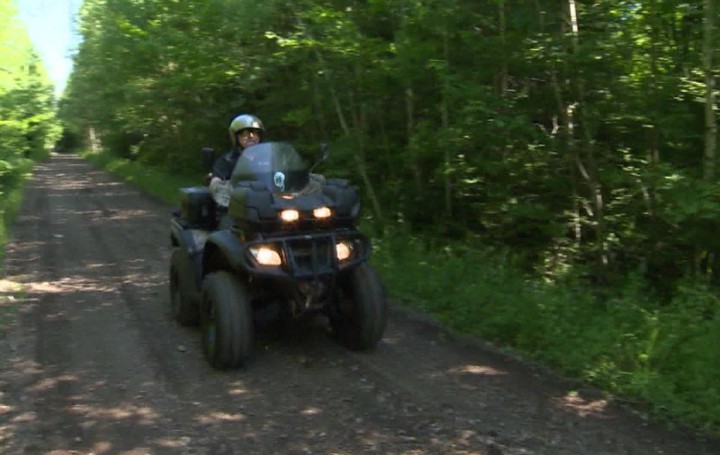SASKATOON – A Saskatchewan organization is stressing the importance of ATV safety for children. The average age of people treated at emergency rooms in Canada for ATV-related injuries is 15, according to studies.

John Meed, the general manager of the Saskatchewan All-Terrain Vehicle Association, said one reason is that children are the most vulnerable demographic.
“Children have the highest amount of limitations when it comes to ATVs, because they do not possess the physical development to safely drive large ATVs or the cognitive ability to react to potentially dangerous situations – regardless of their size or maturity,” said John Meed, general manager of the Saskatchewan All-Terrain Vehicle Association.
READ MORE: A road to recovery: surviving a brain injury and life six years later
Meed said safety measures common to most conventional motor vehicles – seatbelts and air bags – aren’t found on ATVs.
A full-size ATV weighs over 225 kilograms and can reach highway speeds. Young ATV drivers who haven’t taken a safety course and are not wearing proper gear are putting themselves at risk.
“You wouldn’t give your children the keys to your car if they have received no driver training,” said Meed.
“Allowing them to ATV under the same circumstances is just a reckless and can have lethal results.”
READ MORE: Transportation minister calls for review of ATV regulations for Alberta youth
Meed said there are a number of factors to consider when selecting the right age-appropriate ATV for a child once they have received proper training: no greater than 70cc for child under 12 and no greater than 90cc for children between 12 and 16.
Proper gear is also important, said Meed, including: a helmet, gloves, ankle boots, long pants and a long-sleeve shirt.
There are also a number of other policies that all ATVers should follow: avoid taking passengers, don’t speed or attempt risky manoeuvers, ride in appropriate settings, don’t drinks and ride; carry a communications device, and designate an emergency contact.
“Before ATVing, take time to honestly reflect and determine whether or not you have taken every precaution,” said Meed.
“By simply using your head, you can avoid a potentially dangerous situation.”


Comments